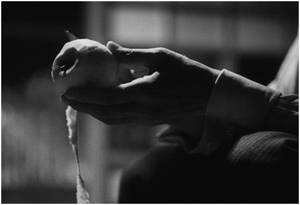March 26th Log
FLOWING
1956, Mikio Naruse, Japan
1st Viewing, DVD
Well I’ll only comment briefly and reserve more thoughts for when I watch this again on Wednesday night. I have immediately scheduled to watch the film again simply because my initial reaction is that Flowing is one of the greatest films I have ever seen. I had a similar reaction to Naruse’s When a Woman Ascends the Stairs earlier this month and I rate Flowing as an equal masterwork alongside the greatest achievements of Naruse (Floating Clouds would be another film on that list). Flowing is simply a perfect film. It is an ensemble film centering on the world of woman living in a geisha house. The film is a parallel of life daily flow and of the crisis of the geisha house. As is a Naruse trademark money and debt obligations becoming a critical factor. From the opening shot, Flowing becomes a film of the flow of life. Within the troubles of the geisha house lies the films emotional core, which is that of the maid, played by the great Kinuyo Tanaka. She is nicknamed Oharu (a clear reference to her career defining role in Kenji Mizoguchi’s 1952 masterpiece Life of Oharu), and she represents the everyday daily flow of life in the most endearing and caring manner. There is so much more that I love about this film and really will never truly capture with words. I plan on watching this again on Wednesday night and will probably further articulate some of my glowing thoughts on this masterpiece.
GOYOKIN
1969, Hideo Gosha, Japan
1st Viewing, DVD
Hideo Gosha is often overlooked as a great filmmaker but he is responsible for some notable films of Japanese cinema. His 7th feature, 1969’s Goyokin stands as a Japanese landmark simply because it was the countries first feature film shot in Panavision. The film showcases this from the opening frame, a wide shot of a scenic mountainside. This continues throughout the film which uses landscapes of forests, villages, seasides, and colorful visuals to great heights. Goyokin is a samurai film made very much in the conventions of the genre. Gosha gives the film a complex depth and involvement through his crafty filmmaking. After a stunning opening sequence, the film takes some time to develop but this is done mostly within the conventions of the genre. It builds tension through setup before quickly flashing the lively fight sequences. The layers of the story really evolve as the film progresses, centering on a samurai (Magobei) who choose to abandon his clan after they slaughter a small village in order to collect gold and pay taxes. Looking to rid the guilt Magobei protects the remaining survivor of the massacre and seeks to stop the clan from repeating the massacre. Tatsuya Nakadai gives a strong lead performance as the conflicted samurai and Ruriko Asaoka is also strong in the role of the woman he protects. No masterpiece, Goyokin is top-notch samurai filmmaking with some serious emotional layers and crafty filmmaking. It has plenty of swordfights, but is far from bloodfest more common of samurai films. Still this remains a really good film from a talented filmmaker. I still prefer Gosha’s 1965 film Sword of the Beast, but Goyokin is among the better samurai films I’ve seen and is essential viewing for fans of the genre.



0 Comments:
Post a Comment
Subscribe to Post Comments [Atom]
<< Home